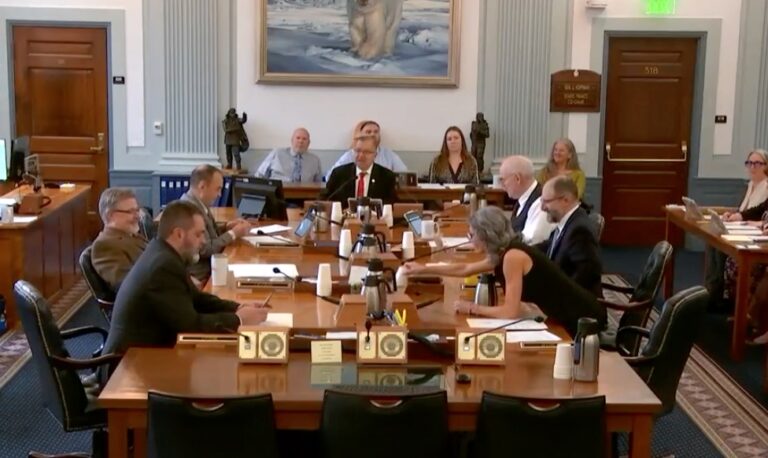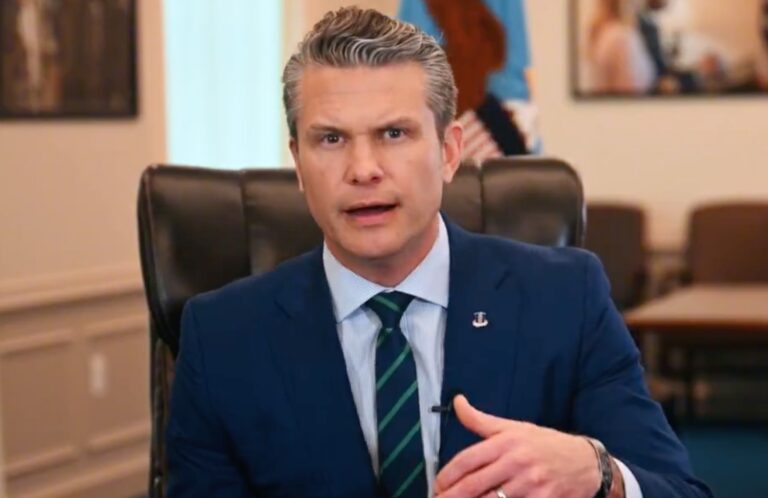Anchorage Mayor Suzanne LaFrance is betting big on big and costly government intervention to solve one of the city’s most visible and pressing issues: Vagrancy and makeshift shanties in greenbelts by those who are living the outdoor lifestyle.
With her “10,000 Homes in 10 Years” initiative, LaFrance has launched a large-scale effort to build housing, expand shelter options, and provide services — all with the belief that the public sector can engineer a solution to what many consider a deeply complex social crisis that involves mental health and chronic substance abuse.
She intends to somehow build 1,000 residential units a year. It’s unclear how many will be subsidized by working Alaskans.
Yet, there are not 10,000 lots in Anchorage, which means the mayor intends to increase density, creating more low-income housing, much of which will be provided to people at no cost or greatly subsidized cost. Property taxes will increase to offset what some real estate professional predict will most likely become tax-exempt residential units.
The philosophy behind LaFrance’s initiative echoes another massive government experiment: President Lyndon B. Johnson’s Great Society, a sweeping federal program launched in the 1960s with the aim of eradicating poverty and racial inequality. While Johnson’s vision was to end poverty, the Great Society’s long-term legacy was more complicated. Generations have become trapped in a pattern of government dependency and handouts started in the 1960s under Johnson. Poverty has only decreased because taxpayers are subsidizing others with public housing, EBT cards, and free services of all sorts, from health care to subsidized phones and power costs.
Since the launch of the Anchorage housing strategy in July 2024, LaFrance says she has opened over 530 winter shelter beds, launched warming centers, abated two dozen encampments, and directed millions of dollars toward housing development. The administration’s message is clear: Government action and spending will turn the tide on homelessness.
But the truth is also more complicated. To compare, during the Bronson Administration, there were 360 beds in mass shelters in the winter of 2023, and another 200 non-congregate shelter beds (double-occupancy rooms) in hotels. There were other shelters as well, such as Brother Francis.
In other words, LaFrance has not provided more shelter than the previous administration, but she does present it to the public as though it’s a crowning achievement.
The problem? The tide hasn’t turned in Anchorage. Despite her efforts, the outdoor lifestyle in Anchorage appears to have grown, not shrunk. Encampments are visible everywhere, shelters remain overwhelmed, and public frustration is mounting. Inebriates, drug addicts, and criminals have once again taken over the city streets and trails.
Yet, like President Lyndon Johnson did before her, Mayor LaFrance insists the answer lies in simply doing more of the same: more housing, more services, more spending.
Johnson’s Great Society was one of the most ambitious expansions of federal power in US history. Programs like Medicaid, Medicare, food stamps, and public housing aimed to lift the poor out of poverty and provide a social safety net. But while it may have reduced certain poverty metrics, such as hunger addressed with food samps, it created a permanent underclass dependent on government aid. Mass apartment housing created ghettos like the Cabrini Green project on Chicago’s north side, which became a hotbed of crime and despair.
Rather than fostering independence, the Great Society entrenched bureaucracy, discouraged work, incentivized poor lifestyle choices, and eroded personal responsibility. As economist Thomas Sowell noted, “The black family survived centuries of slavery and Jim Crow, but it disintegrated in the wake of the Great Society.”
Now, it appears Mayor LaFrance is repeating the same mistake on a municipal scale, trying engineer a fix without confronting the personal, cultural, social, spiritual, and systemic factors that drive chronic homelessness.
LaFrance promises visible results in three years: fewer people visibly camping, more people in services, and new pilot programs like microunits and RV-safe zones. Skeptics note that Anchorage has already poured millions into homelessness with little to show for it.
“It’s déjà vu,” a Must Read Alaska reader said. “We keep layering programs on top of programs, but the root causes — addiction, untreated mental illness, lack of accountability — remain untouched. And without real change, no amount of housing will fix that.”
The administration promotes its dashboard and data tools as transparency, but even the most robust analytics can’t mask a simple truth: More programs don’t necessarily equal more progress. After all, the Anchorage Coalition to End Homelessness has been in the business of reducing homelessness for several years, but has had no measurable effect.
In Anchorage, 2,940 were “experiencing homelessness” in July 2024, a 54% increase in five years, while the residential vacancy rate is over 9%, with apartments renting for about $1,400 a month.
In her public statements, LaFrance emphasizes compassion and collaboration. But her approach leans heavily on accommodation, or making the vagrant and homeless lifestyle more tolerable.
Camp abatements are balanced with shelter beds added, but personal responsibility is rarely mentioned. Designated parking for RVs and “micro-units” for transitional living may offer temporary relief, but may just as easily institutionalize homelessness as a permanent lifestyle.
In seeking to copy the scale and vision of the Great Society, Mayor LaFrance may also be repeating its most damaging assumption: that government alone can fix a human heart or spirit that is fundamentally broken.
Last year, the Anchorage Assembly dismantled single-family zoning to allow more density in neighborhoods.
The Assembly has already created its own five-year plan of building less than 200 units a year, and passed a new zoning ordinance allowing multi-family in B-3 zoning, which is commercial zoning, requiring very little in the way of permits and very little parking spaces required.
Those B-3 lots may be the target for LaFrance, and there are a few of them in Spenard and Muldoon.
In addition, Rep. Andrew Gray has a legislative bill, House Bill 13, that would allow Anchorage to give property exemptions to “certain long-term rental units, certain mobile home parks, real property rented to low-income families, real property owned and occupied as a permanent place of abode, and real property owned by first-time homebuyers.” This would add even more property tax exemptions to the hundreds of exemptions being given to for-profit developers across Anchorage.
The people living on Anchorage streets and greenbelts are probably never going to pay rent. When they are put into LaFrance housing, the working and taxpaying public will be paying for it, just as taxpayers are currently paying for homeless to stay in hotels.
But with the current exodus of taxpaying citizens to the Mat-Su Valley, Anchorage homeowners may find their homes devalued by neighboring “projects” of Mayor LaFrance’s Great Society.








